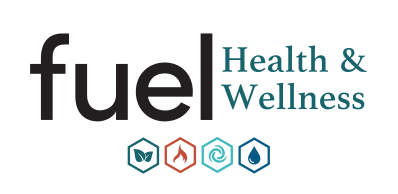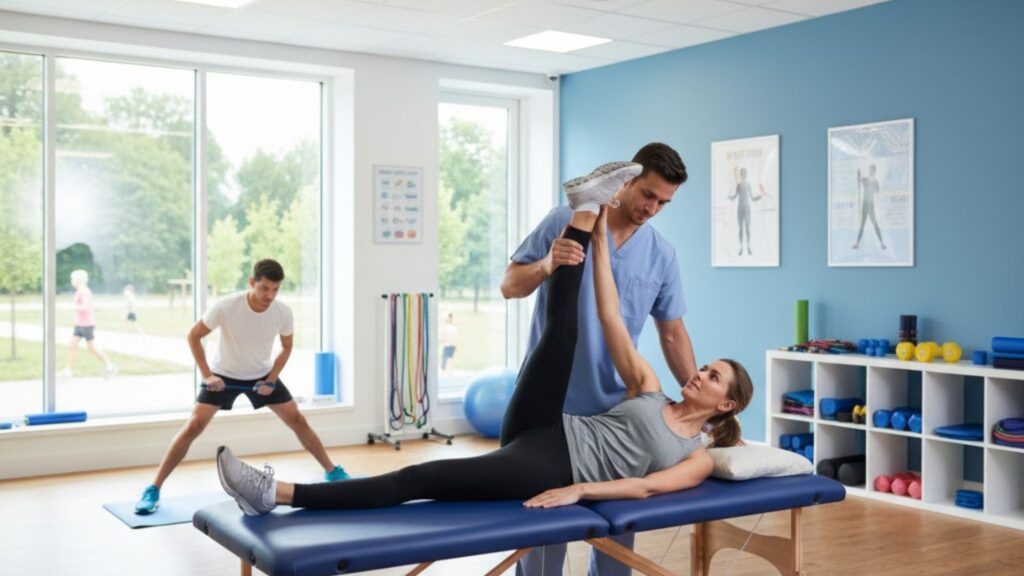The demands of an active lifestyle, whether you’re a dedicated runner pounding the pavement for miles or a weekend warrior tackling high-intensity interval training, place significant stress on the body. While proper training and nutrition are essential components of any fitness regimen, a crucial element often overlooked is the systematic maintenance of the body’s soft tissues. Many active adults and runners find themselves sidelined by frustrating, often recurring injuries—from hamstring strains to Achilles tendinitis. This is where Assisted Stretch Therapy emerges as a game-changer, moving beyond the casual pre- and post-workout stretches to offer a focused, deep, and highly effective form of manual therapy. We, at Fuel Health & Wellness, understand the biomechanical nuances of active bodies and believe that this practitioner-led approach is key not just to faster recovery, but to proactive injury prevention and sustained peak performance. In the following comprehensive guide, we will explore the science behind professional assisted stretching and how it can be the missing link in your pursuit of a lifelong, injury-free active life.
How Does Professional Assisted Stretching Differ from Self-Stretching?

Self-stretching is certainly a valuable part of a daily routine, contributing to general flexibility and warm-up or cool-down protocols. However, it fundamentally differs from professional assisted stretching in terms of depth, technique, and neurophysiological effect. When you stretch on your own, your body’s inherent defense mechanism, known as the “stretch reflex,” often limits how far you can safely go. This reflex causes the muscle to contract when it senses it is being stretched too quickly or too far, protecting it from a tear but simultaneously restricting maximum range of motion gains.
Professional assisted stretching, typically performed by a certified therapist, works with this nervous system response, rather than against it. Techniques like Proprioceptive Neuromuscular Facilitation (PNF) involve cycles of gentle contraction and relaxation, which “re-educates” the muscle’s stretch reflex. This allows the therapist to safely guide your muscle into a deeper, more therapeutic range of motion than you could ever achieve alone. The hands-on, one-on-one attention ensures that stretches are tailored to your unique anatomical structure and specific areas of tension or weakness, promoting not just flexibility, but a genuinely functional increase in mobility.
What Are the Core Benefits of Assisted Stretch Therapy for Injury Prevention Stretching?
The primary goal of incorporating a specialized modality into a fitness routine is to build resilience against the mechanical stresses of exercise. For active adults and especially runners, who engage in repetitive movements, imbalances and muscle tightness are not a matter of if, but when. Assisted Stretch Therapy directly addresses these root causes, offering a multi-faceted approach to safeguard the body.
Addressing Muscle Imbalances and Functional Flexibility
Most running and fitness-related injuries stem from imbalances. For example, a runner with tight hip flexors might compensate by over-extending their lower back, leading to pain or even a stress fracture over time. Similarly, tight hamstrings can put undue strain on the knees or lower back. Assisted stretching allows a practitioner to precisely identify and target these tight or restricted muscle groups. By restoring optimal muscle length and achieving functional flexibility, the therapy ensures that all muscles work harmoniously, distributing load and stress evenly across joints. This is a critical factor in injury prevention stretching. A flexible, well-balanced body simply moves more efficiently, reducing the friction and strain that lead to chronic issues.
Enhancing Range of Motion (ROM) and Movement Efficiency
An improved range of motion is perhaps the most immediate and noticeable benefit of assisted stretching. However, this is not merely about being able to touch your toes; it’s about improving movement quality. For runners, greater hip and hamstring mobility translates directly to a more powerful, longer stride without excessive effort. For active adults, a greater shoulder or thoracic spine ROM can prevent strain during overhead lifts or dynamic movements. When joints can move through their full, natural range, the surrounding muscles are less likely to be yanked, pulled, or stressed beyond their capacity. This enhanced movement efficiency protects key joints like the knees, ankles, and hips from the cumulative microtrauma of high-impact activity.
The Role of Fascia in Muscle Recovery Therapy
Beyond muscle fibers, our bodies are enveloped in a complex web of connective tissue called fascia. This tissue surrounds muscles, groups of muscles, blood vessels, and nerves, essentially holding the body together and supporting structure. When fascia becomes tight, dehydrated, or restricted—often due to repetitive activity, injury, or prolonged static posture (like sitting at a desk)—it can severely limit mobility and cause referred pain.
Assisted stretching techniques, particularly those focusing on continuous, controlled movement and sustained pressure, are highly effective for fascial release. The therapist uses their body weight and precise angles to safely encourage the fascia to lengthen and become more pliable. This not only directly helps with muscle recovery therapy by reducing stiffness but also promotes better circulation, which is vital for flushing out metabolic waste products like lactic acid and supplying muscles with nutrient-rich, oxygenated blood.
Is Assisted Stretch Therapy for Runners Especially Effective?

The repetitive and linear nature of running often leads to predictable patterns of tightness, particularly in the lower body. Runners frequently present with issues related to the hip flexors, hamstrings, calves, and the iliotibial band (IT band). These restrictions can compromise gait, leading to common running injuries such as Runner’s Knee (patellofemoral pain syndrome), shin splints, plantar fasciitis, and hamstring strains.
Targeted Benefits for the Running Community
Assisted stretch for runners is not a generic flexibility session; it’s a targeted biomechanical intervention. A stretch therapist at Fuel Health & Wellness will focus heavily on key areas:
- Hip Flexor Release: Essential for undoing the effects of sitting and improving the hip extension necessary for a strong push-off phase in running.
- Hamstring and Glute Integration: Crucial for power generation and ensuring the hips, not the lower back, are driving movement.
- Calf and Ankle Mobility: Directly impacts the biomechanics of the foot strike and toe-off, playing a preventative role against Achilles issues.
By manually isolating and stretching these specific muscle groups and surrounding connective tissues, the therapy can immediately optimize a runner’s biomechanics. Many runners report feeling “lighter” and having a more fluid, powerful stride immediately following a session. Incorporating this modality regularly can keep the running body operating at its peak, transforming a brittle, injury-prone system into a resilient machine. We encourage all active individuals to meet the team of dedicated professionals at our facility to discuss a tailored plan.
Integrating Assisted Stretching into Your Active Lifestyle

The best way to reap the benefits of assisted stretching is through consistency. It should be viewed not as a luxurious treat, but as an integral, non-negotiable part of your overall wellness and training plan, similar to strength training or cross-training.
The Ideal Frequency and Timing
While individual needs vary greatly based on training volume, intensity, and existing issues, a general recommendation is to engage in a professional assisted stretch session one to two times per week.
| Timing of Session | Focus and Primary Benefit | Who Benefits Most? |
| Pre-Activity (Warm-Up) | Dynamic stretches, activating muscle groups, gentle mobilization to enhance readiness and range of motion for the workout ahead. | Athletes with significant pre-existing tightness or those preparing for competition/PR attempts. |
| Post-Activity (Cool-Down) | Static and PNF stretches, focusing on deep tissue release, reducing muscle tonus, and flushing out metabolic byproducts. | Nearly everyone; maximizes recovery and addresses post-exercise tightness to minimize DOMS. |
| Recovery Day (Standalone) | Comprehensive mobility assessment and deep, restorative work on chronic problem areas to correct postural and functional imbalances. | Individuals with high training volume, desk workers, or those managing persistent tightness/pain. |
It is important to remember that this therapy provides a uniquely deep level of tissue work that is difficult to replicate through self-massage tools or yoga. To experience this for yourself, feel free to contact us at any time to schedule your introductory session.
Deeper Dive: The Science of Connective Tissue and Neuromuscular Control
The effectiveness of professional stretching rests on sophisticated biological principles that go beyond simple muscle elongation. It engages both the nervous system and the architecture of connective tissue, creating a lasting change in how the body perceives and allows movement.
The Role of Proprioceptors: Muscle Spindles and Golgi Tendon Organs
As mentioned earlier, the nervous system actively regulates muscle length through special sensory receptors called proprioceptors.
- Muscle Spindles: Located within the muscle belly, these receptors detect the rate and extent of muscle stretch. When a stretch is too fast or forceful, the spindles trigger the stretch reflex, causing the muscle to contract to prevent damage. Assisted stretching, when performed slowly and with controlled resistance (as in PNF), can desensitize these spindles, effectively “calming down” the reflex and allowing a deeper stretch.
- Golgi Tendon Organs (GTOs): Located in the tendons, these receptors monitor muscle tension. When tension becomes too high, the GTOs trigger an inhibitory reflex that causes the muscle to relax. PNF techniques strategically use a brief, gentle muscle contraction against resistance (the “contract” phase) to activate the GTOs, forcing the muscle to relax more completely for the subsequent deeper stretch. This is the physiological mechanism that makes professional Assisted Stretch Therapy so profoundly effective.
By leveraging these involuntary reflexes, a skilled therapist can communicate with your nervous system, teaching your muscles to relax and lengthen beyond their habitual resting length. This is a form of neuro-muscular re-education, fundamentally improving the body’s baseline state of tension.
Connective Tissue Elongation: Myofascial Release
The sustained, gentle pressure and mobilization techniques used in assisted stretching also target the three-dimensional matrix of the myofascial system. Over time, and particularly with intense or repetitive training, microscopic tears in muscle tissue are repaired with scar tissue, and the fascia itself can become dense and adhesive. This is what many people refer to as “knots” or “trigger points.”
Myofascial release techniques, which are integrated into the assisted stretch approach, use sustained, mild pressure to stretch and soften the fascia. This process, often referred to as “breaking up the glue,” helps restore the slick, sliding nature of the fascial layers, allowing muscles to move independently and smoothly. This release is crucial not only for flexibility but also for preventing the referred pain and restricted movement that often initiate the injury cycle.
A Holistic Approach to Health and Longevity
At Fuel Health & Wellness, we view assisted stretching as more than just a quick fix for tight muscles; it is a foundational pillar of a comprehensive, proactive health strategy. For active adults who want to maintain their peak physical capabilities well into their later years, regular mobility work is paramount. A loss of flexibility and range of motion is one of the clearest markers of physical aging. By maintaining or even increasing your active range of motion, you are actively slowing this process.
Beyond the Physical: Stress Reduction and Mental Clarity
The benefits of stretching are not purely physical. The one-on-one session environment, combined with the deep breathing techniques encouraged by the therapist, provides a dedicated time for mental decompression. Deep, conscious breathing, often a focus during an assisted stretch, engages the body’s parasympathetic nervous system, commonly known as the “rest and digest” system. This shift from the “fight or flight” mode (sympathetic nervous system), which is often over-activated in highly stressed or highly trained individuals, promotes deep relaxation. This stress reduction can improve sleep quality, reduce systemic inflammation, and enhance the overall recovery process—a vital, yet often neglected, component of muscle recovery therapy.
For an individual who is constantly pushing their limits, whether in the gym or the office, the time spent on the stretching table is an essential moment for the body to reset and recover. It’s an investment in the long-term health of your entire being, not just your muscles.
Frequently Asked Questions About Assisted Stretch Therapy
Active individuals often have specific questions about how this type of therapy can fit into their existing routines and goals. Here are five of the most common inquiries our specialists address:
1. Does assisted stretching hurt?
While you will feel a deep stretch and a sensation of tension, assisted stretching should never be painful. A certified stretch therapist communicates with you constantly, working within your comfortable limit rather than forcing you past it. The goal is a therapeutic stretch that coaxes the muscle to lengthen, not a painful pull that triggers a defensive contraction. Most clients describe the feeling as intense but deeply relieving.
2. How often should a dedicated runner utilize assisted stretch therapy?
For dedicated runners training several times per week, a frequency of once or twice a week is often recommended to maintain optimal tissue health. Once a week provides excellent preventative maintenance and consistency, while twice a week may be ideal during high-mileage training blocks or when managing a specific chronic tightness. Your therapist can create a personalized plan to maximize your gains.
3. Is assisted stretching safe for someone with an old injury, like a strained hamstring?
Absolutely, but with caveats. You should always seek clearance from a medical doctor or physical therapist for any acute (new) injury. However, for an old or chronic issue, assisted stretching can be incredibly beneficial. Often, an old strain leaves behind scar tissue and residual tightness. A skilled therapist can use precise, controlled movements to safely work on the surrounding tissues, improve blood flow, and gently increase the functional range of motion, which is crucial for preventing a re-injury.
4. How quickly will I see results in my running performance or flexibility?
Many clients report feeling immediate differences in lightness, range of motion, and posture directly after their first session. Measurable, lasting gains in functional flexibility, pain reduction, and improved athletic performance (like a more efficient running gait or better squat depth) typically become apparent after a few consistent weeks of therapy, especially when combined with your regular training.
5. What should I wear for an assisted stretch therapy session?
The most important requirement is loose, comfortable clothing that allows for a full range of movement. Athletic wear, such as yoga pants, shorts, or a t-shirt, is ideal. Avoid jeans or any restrictive clothing, as the therapist will be moving your body into various positions.
Conclusion: Investing in a Lifetime of Active Health
For active adults and runners, the pursuit of performance should always be balanced with a robust, proactive strategy for physical maintenance. Relying solely on self-stretching is often insufficient to counteract the deep-seated muscle tension and fascial restrictions that build up from repetitive exercise and modern life.
Assisted Stretch Therapy provides the professional depth, neuro-muscular expertise, and targeted relief necessary to unlock your body’s full, pain-free potential. By safely and effectively increasing your flexibility and range of motion, you are drastically reducing your risk of injury, speeding up your recovery, and ultimately ensuring you can keep moving well for decades to come. Make the commitment to your long-term athletic health. The dedicated professionals at Fuel Health & Wellness are ready to partner with you to achieve a more resilient, mobile, and high-performing body.


